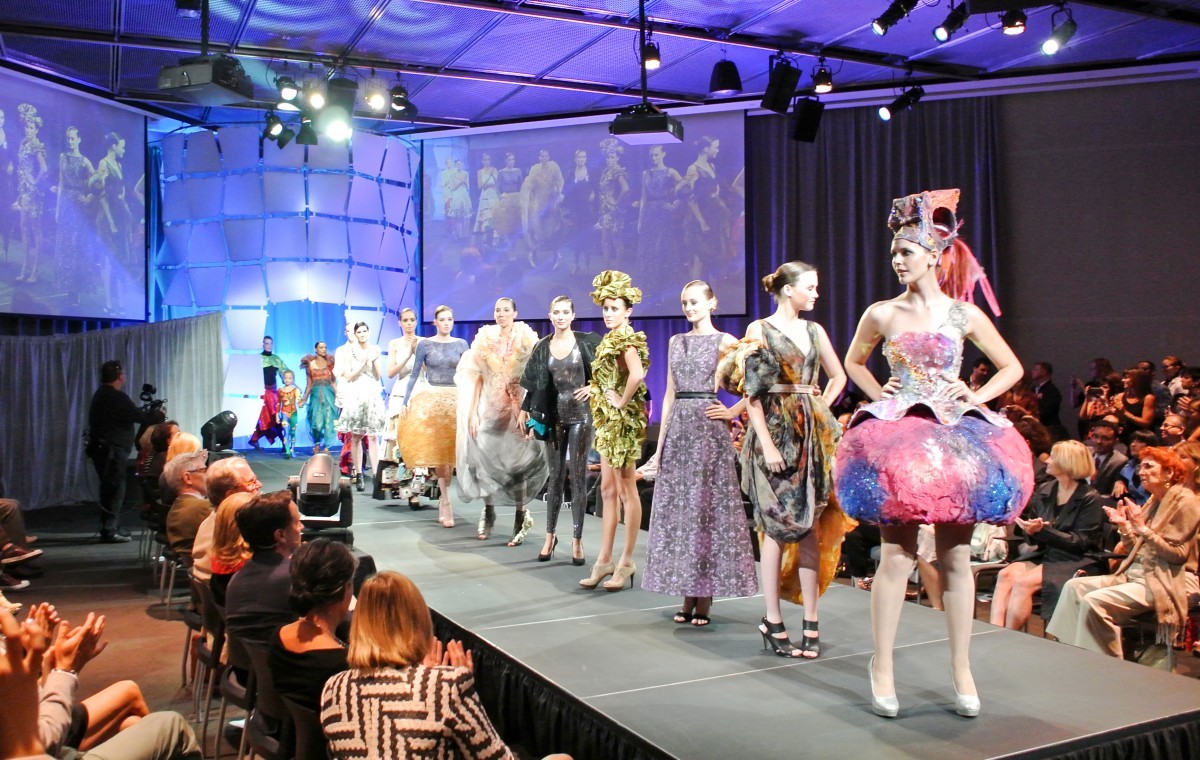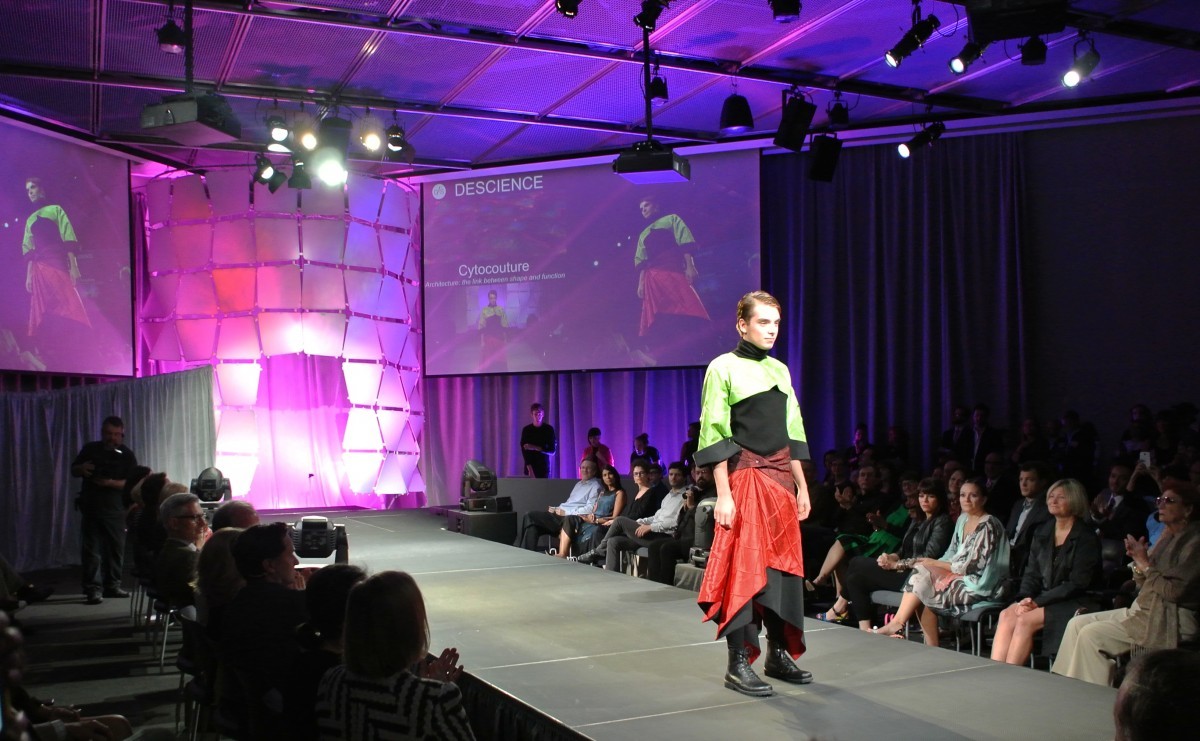Fashion had an unlikely muse at the Descience Fashion Show, a runway competition hosted in MIT’s Media Lab. Instead of the usual celebrities and socialites, the designers drew their inspiration from molecular biologists, neuroscientists, biomedical engineers, climatologists and scientists from a variety of disciplines. Descience fosters collaborations between designers and scientists with the aim to “provide science with a new language and give fashion a new source of inspiration.”

There are four phases to the process: inspiration, connection, collaboration and a culminating runway show. Scientists from North America, South America and Europe participated in this year’s competition, contributing images and ideas for the designers’ perusal. The designers connect with scientists whose research inspires them; then the scientists select which designer they want to work with based on their portfolios. According to one of the participating scientists, Pablo Rojas, who formed team Obuba with designer Shih-Hui Chang, “The collaboration isn’t about sharing the same aesthetic. It’s about breaking the ice between the sciences and the arts.” Executive Director of Descience, Yuly Fuentes-Medel, Ph.D, who trained as postdoctoral associate at the MIT Sloan School, hopes to expand the reach of Descience to include more participants from developing countries. “Good ideas are everywhere. Collaboration is mostly about creativity, and then resources, which is where Descience can lend support.”
Fifteen finalists were selected from the 61 participating teams to have their looks featured in the 2014 Descience Runway Show. The esteemed judges for this first Descience competition included MIT Professors Neri Oxman (Assistant Professor, Media Arts & Sciences, MIT Media Lab) and Dr. Sangeeta Bhatia, M.D., Ph.D. (Director, Laboratory for Multiscale Regenerative Technologies, MIT Koch Institute), together with Michelle Finamore, Ph.D (Penny Vinik Curator of Fashion Arts, MFA), Nobel Laureate Dr. Jack W. Szostak, PhD (Harvard Medical School), Gabriel D. Victora, PhD (Fellow at Whitehead Institute for Biomedichal Research), Jay Calderin (School of Fashion Design, Boston, Boston Fashion Week, Executive Director) and Francesca Amfitheatrof (Design Director at Tiffany & Co).

The winning look was from Cytocouture, a team consisting of Boston-based designer Carlos Villamil and MIT Biomaterial Engineer Dr. Laura Indolfi. Villamil describes his design as “a Zero Waste Unisex Multifunction Clothing System.” The concept was based on Dr. Laura Indolfi’s endothelial cells research: “Dr. Indolfi studies how endothelial cells behave differently according to the structure they grow in and cling to. We created a clothing system that is a metaphor of that idea.” All the gender-neutral pieces are reversible and can be folded to transform into different shapes, bringing a variety of options to the wearer.

Honorable Mentions were awarded to Quorum54 (Designer: Tatiana Tejedor, Scientist: Tal Danino) and Interwoven (Designer: Margaret Jackson, Scientist: Pedro Parraguez Ruiz). Quorum 54’s look was based on Tal Danino’s research at MIT using bacteria as a potential treatment for cancer. Fluorescence microscopy images of cancer cells and bacteria interacting influenced the dress fabric, which was hand-painted with fluorescent pigments to achieve a similar luminescence. Interwoven describes their garments as representative of the “complex networks within a design process.” Material from the skirt was used to print the fabric for the body suit to emphasize the importance of connectivity through the various stages of design. Transmutation (Designer: Arielle Gogh, Scientist: Esther Baena) and Cryptic (Dsigner: Ana Thompson, Scientist: Sean Speese) were the other teams ranked among the top five finalists, and the public choice winner was team Orphacure (Designer: Candice Wu, Scientist: Christopher Gibson). After being exhibited at the Koch Institute during Boston Science Week, the fifteen finalists’ designs will be featured in an international traveling exhibition.
A few of the Descience teams have decided to continue their collaboration beyond the 2014 Descience runway. Expect to see expanded collections from Synaesthesia Muse (Designer: Hary Umen, Scientist: Angela Chang), who are investigating how LED lights can create new color palettes and The Highjackers (Designer: Kyley Smithers, Scientist: Cindy Lai), who are designing garments tailored to the needs of people with physical disabilities. Fashions may change, but the trends at Descience 2014 — innovation, inclusivity, sustainability — may never go out of style.
